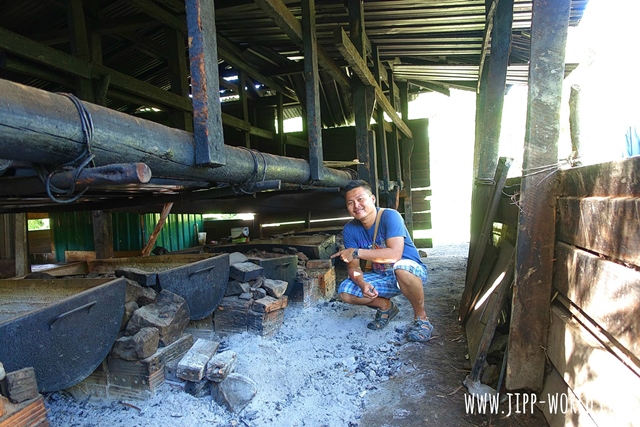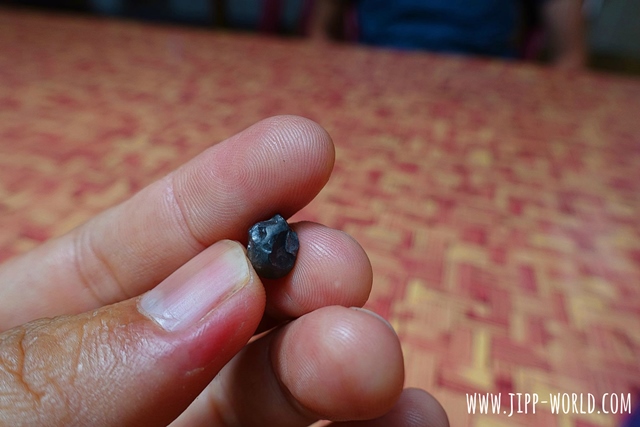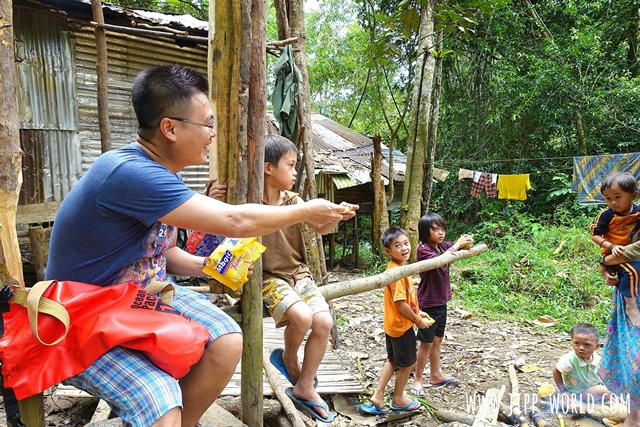So, I went to Bario recently. It has always been in my bucketlist for so long. I mean, I’ve always wanted to go there ever since I was still at the university when I first heard about a highland area near the Indonesian border on the Kalimantan side – about its high quality rice and pine apples and the Kelabit people with their unique cultures and traditions. When my job required me to return to Kapit for a few days of field work, I grabbed the opportunity to fly to Sarawak earlier so that I could spend a few days in Bario.
We flew to Miri from KL on an Air Asia flight before flying to Bario on a 16-seater Twin Otter operated by MAS Swing. It would be my very first time flying on the famous air-craft so I was quite nervous. But then, it turned out to be a very steady flight so I couldn’t help but feeling a little bit disappointed. I’ve always wanted things to be a little bit adventurous so that there are more things to talk about with my friends when I return to KL. In fact, my travel buddy Aiman fell into a very sound sleep that I had to wake him up when the aircraft landed so steadily on the landing strip in Bario. LOL!
The Long House of Bario Asal Lembaa
I was quite lucky because Jennifer, a long time friend of mine had agreed to join us in Bario. She knows somebody in Bario that actually offered us to stay at his place so everything was so easy peasy and smooth. His house turned out to be at a long house called Bario Asal Lembaa – the oldest long house in Bario!
I really like the long house. There’s something about it that makes me feel immediately connected to the community. Being the oldest long house in Bario, it’s quite safe to say it is the place of origin for most of the Kelabit people which is the dominant ethnic group in Bario. It didn’t take me long to realize that the long house is almost deserted now – with most of those who are still staying there are among the elderly. Like most other remote places in Sarawak and even Sabah, most of the younger generations would rather move out and stay in urban areas like Miri and Kuching where there are more job opportunities and the lives are more vibrant – leaving the older generations to stay back and look after the long houses.
It really makes me worried – that when they are all gone, so are the long house traditions and cultures. I noticed how some of the long houses are almost empty so only time will tell when they are all gonna be completely deserted. But then I also I noticed how some of those who have retired from their services in the city would return to Bario to spend the rest of their lives there. It gives me a little bit of assurance and relief that the long house traditions and cultures will not be gone soon – at least not in the near future. But still, there is no doubt that the young population in Bario is on the decline.
Bario that I’ve found out lies in a beautiful valley surrounded by mountains (they are mountains because Bario itself is already at 1000m above sea level) and greenery. Most of the land is dominated by paddy fields that produce the famous Bario rice which is said to be one of the best rice in the world – thanks to the combination of fertile soil and cool weather. I was told that they don’t cultivate the rice fields all at once. Instead, they’d cultivate some of them while leaving the rest to grow fertile again. I think this is one of the secrets why Bario rice is so good.
I think the basic infrastructure within the central valley is quite OK now, with roads seem to be well-paved and there is a running electricity which I was told comes from a mini-hydro and the rest from solar-powered panels. It was quite a dry season in Bario when we were there so the mini-hydro was not functioning. The Bario Asal Long House had to rely on generators which limited the running hours of the electricity from late evening to midnight. But then, with the chilly weather in Bario, electricity is not really needed during the day. In fact it can get very chilly during the night so one should never go to Bario without bringing some thick clothing with him.
Bario and Spirituality
Bario (means – the valley of the wind) that I found out is a very spiritual place. Most of the locals are faithful Christians from the Sidang Injil Bersatu (SIB) denomination. There seems to be a church in just about every corner. Each long house seems to have a wooden gong and somebody would strike on it at 5am every morning to tell the people that it is time wake up and pray. I really have a lot of respect for the community of Bario. They are so religious they don’t even drink alcohol (most of them) which is a stark contrast to most other communities in different parts of Sarawak that I know.
There is even a hill called The Prayer hill where people would climb up to to pray. On top of it is a gigantic metal cross they have recently erected to replace the old (wooden) one. We went up there on the second day of our stay in Bario and the view from there was so amazing we actually spent much longer there than we had intended to. We even stayed there long enough to watch a Twin Otter turning up from behind the wall of mountains and made a perfect landing at the airport. It really was a beautiful sight to behold.
The Bario Salt
We also went to the see the Bario Salt factory which is located in the far corner of Bario. It is not easily accessible by car so we had to do a little bit of hiking before we arrived there. The conditions of the factory caught me by surprise. It really seems like an ancient one – and much more traditional than I had expected. Everything is so traditional. They’d scoop up the water from the well which will then be boiled until it runs dry – leaving the salt ready to be collected. Of course it is not a simple and direct process. There are so many other things to do in between. But it is worth it because the Bario salt is said to be very rich in mineral – whatever mineral it might be – and much healthier than the conventional salt that we buy from the mini-markets. And much more expensive of course.
The Food
One of the things that are worth mentioning is the food. The Kelabits have their own traditional foods but I don’t quite remember what they are called because most of them are in Kelabit language and I’m not good at remembering names of dishes in other languages than my own. I was there with a Malay colleague so there was some (untold) restriction on the food that they served but still the dishes were great. They even served us with deer meat – which is something that comes so rarely nowadays. They hunted the deer from the deep forest so the meat was much more delicious – both in the taste and the aroma. I laughed when I happened to bite on a bullet – because it reminded me very much of those days when my dad used to go hunting and returned with a lot of meat and one of us in the family would crunch on a bullet when it is cooked and served to us by mom. It was actually a common occurrence back then. LOL.
The Pineapples
The pineapples in Bario are so good and delicious we actually ate more pineapples than rice when we were there. They are so sweet and soft (that) they’d melt in the mouth. I’m not really a big fan of pineapples mostly because of the sore and inflammation that it causes whenever I eat one but somehow I didn’t feel any pain in my mouth when I ate the pineapples in Bario. I always ended up eating more that I probably wanted to. It was there that I finally got to have a taste of pineapple wine – whose existence was nothing more than a myth to me before. I’m not quite sure if I liked it or not but it was quite too sour for my taste that stopped drinking after the 2nd glass. I went to Bario with a bad gastric pain so I didn’t want it to go any worse.
A Visit to Penan Settlement
One of the most memorable things that I did in Bario was probably my little visit to the settlement of a little Penan community not so far from the Bario Asal Long house. It was quite unplanned and we actually went there because one of the local people that we bumped into told us to. It required a lit bit of guts to just go there without being invited because we didn’t know how they were gonna react. The Penan people in Bario live in the jungle where interaction with outside world is quite limited. When we first arrived there, the woman that we first met did not even turn to look when we greeted her. Then we bumped into another and she wouldn’t even react to our hellos. She just turned to us with a blank look. Luckily she was with a group of kids – much probably her own kids – and the noises that they made when they saw a group of strangers alerted somebody in the vicinity – somebody that we could finally talk to.
He told us that they wouldn’t be there for long. They’d only come to Bario so that some of them could work with the Kelapit people and earn a little bit of money to buy their basic necessities. Then they’d leave to return to their village deep in the jungle. “It’s a 3-day journey from here” he told us. Out of curiosity I asked him if the kids even go to school. “We do send them to school but they don’t want. They are stupid” he said bluntly and quite direct to the point. Quite on an impulsive I told him that they should do whatever they could to make sure that the kids go to school and get some education. “Otherwise, you’ll be further left behind”, I told him – and I meant every word of it. Somehow I was both saddened and surprised to see their conditions. It is 2016 and not 1916. I really think these people deserve more attention than what they are getting now. Visiting them really was an eye-opening experience for me.
Well, Bario might not be the most beautiful place on earth but if you want to do something quite out of the ordinary in you travel trips, then Bario is the right place to go. There is something so relaxing about just being there. The rustic charms, the slow pace of life, the cool and fresh air, the ambiance, the atmosphere, the spirituality and above all – the people. I don’t mind going there again really.










2 Responses to Bario – The Valley of the Wind